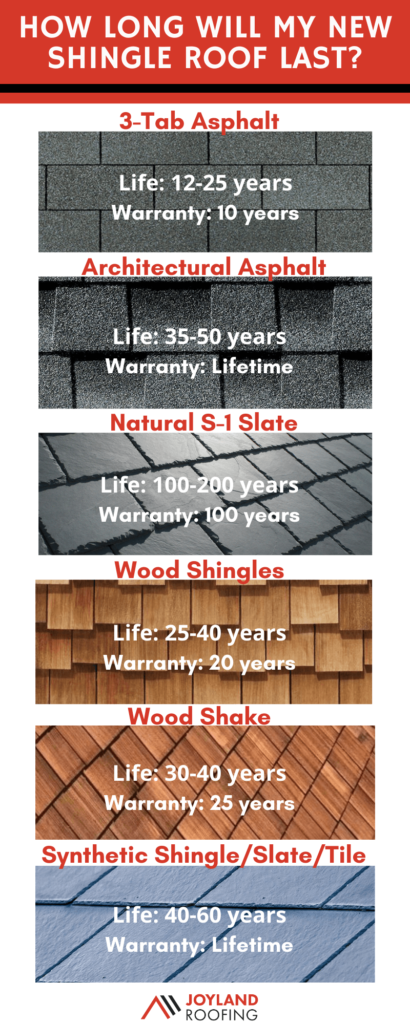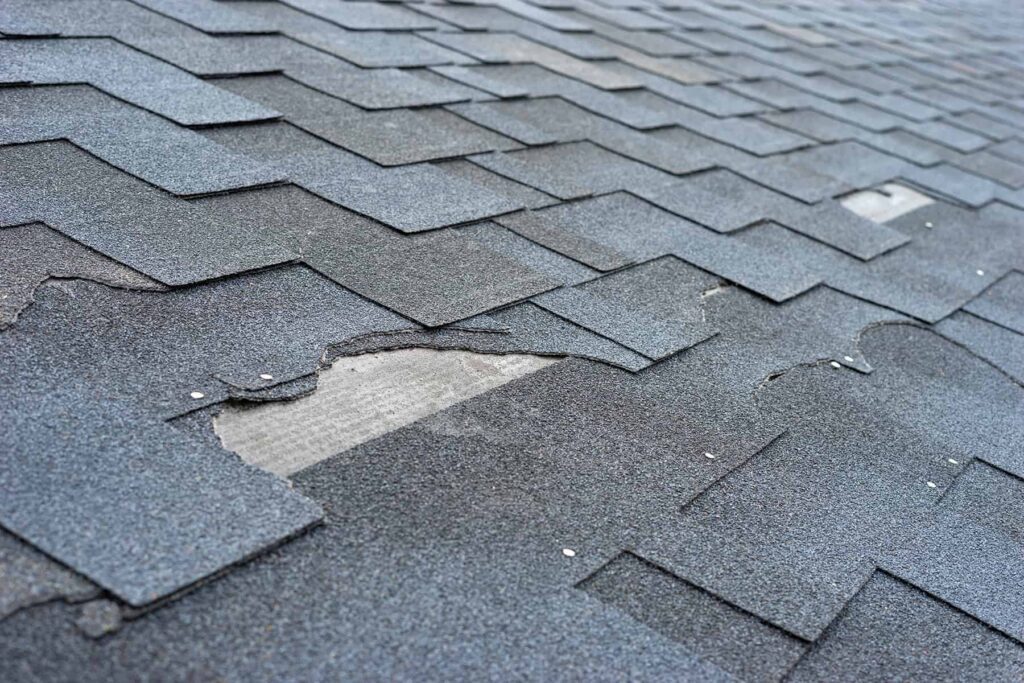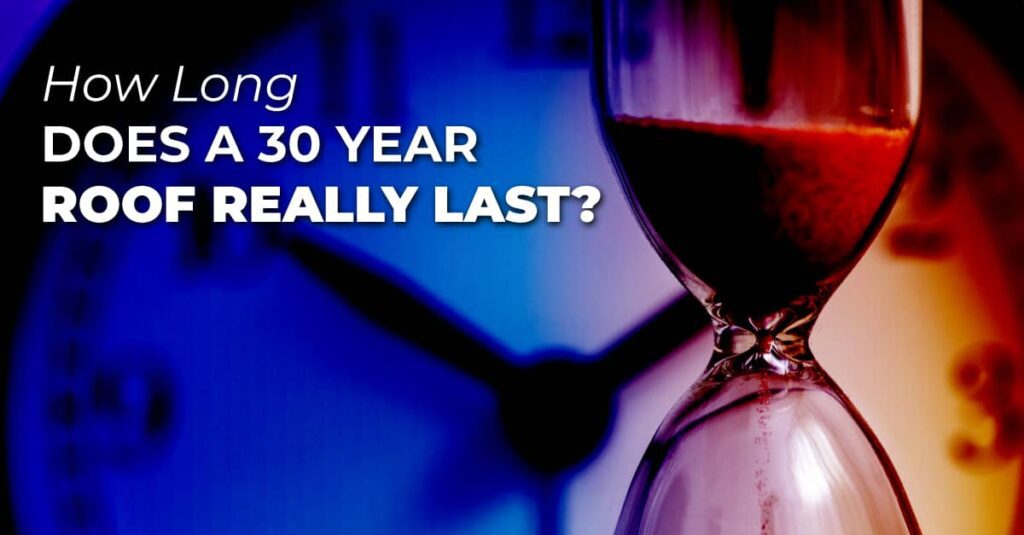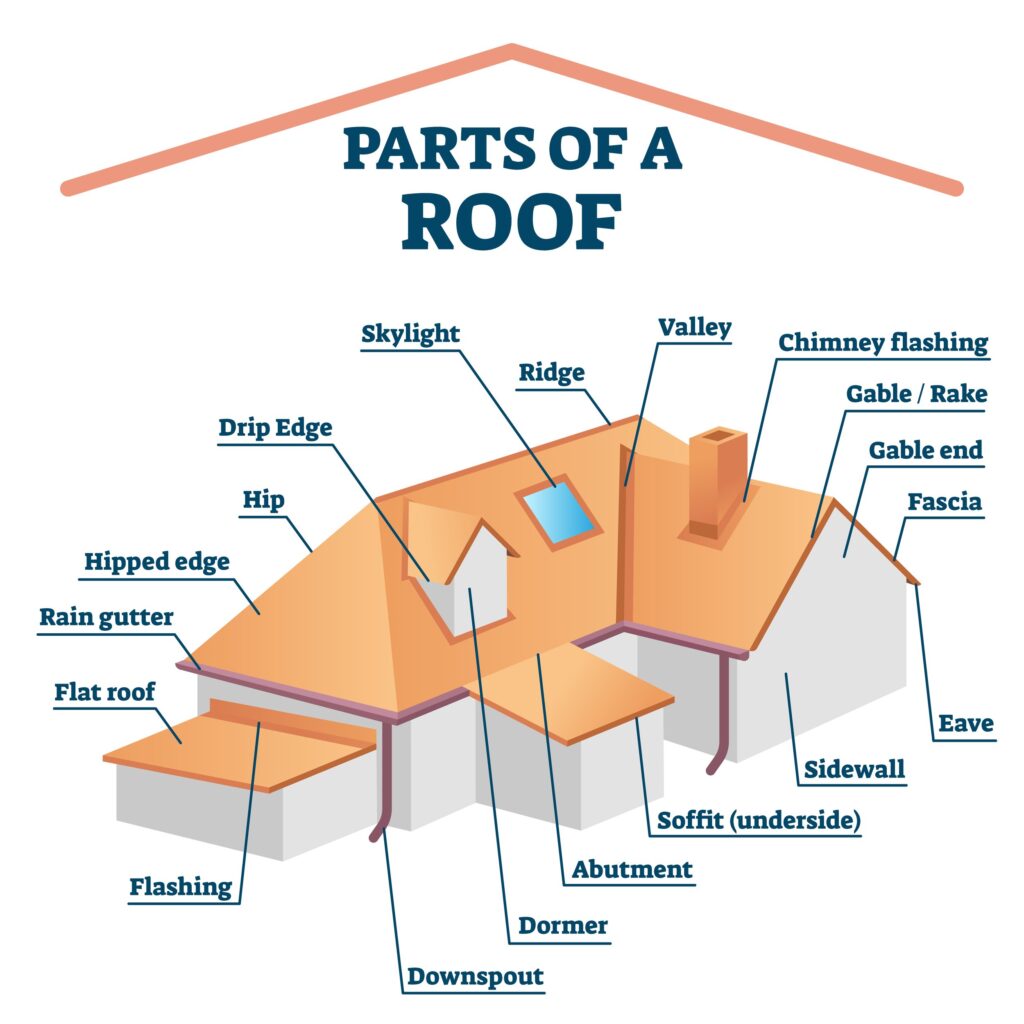You’re considering getting a 30-year roof for your home, but you’re not quite sure if it’ll actually last for the promised three decades. Well, you’re in the right place! In this article, we’ll explore the durability and lifespan of a 30-year roof, giving you all the information you need to make an informed decision. So, let’s dive in and find out just how long a 30-year roof can truly last!


Factors that Affect the Lifespan of a 30-Year Roof
When it comes to the lifespan of a 30-year roof, several factors play a significant role. Understanding these factors will help you make informed decisions about your roofing needs and ensure that your roof lasts as long as possible.
Material Quality
One of the most critical factors in determining the lifespan of your roof is the quality of the materials used. Different roofing materials have different levels of durability, resistance to weather conditions, and overall longevity. It is essential to choose high-quality materials to ensure a longer lifespan for your 30-year roof.
Installation Quality
No matter how high-quality your roofing materials are, the installation process plays a crucial role in the lifespan of your roof. Poor installation techniques or mistakes during the installation process can lead to premature damage and shorten the lifespan of your roof. It is essential to hire experienced and reputable roofing contractors who follow industry best practices.
Climate and Weather Conditions
The climate and weather conditions in your area have a direct impact on the lifespan of your roof. Extreme temperatures, regular exposure to harsh sunlight, heavy rainfall, high winds, and snow can all contribute to roof damage over time. Understanding your local climate and weather patterns can help you choose roofing materials that are best suited to withstand those conditions.
Maintenance and Care
Proper maintenance and regular care can significantly extend the lifespan of your 30-year roof. Regular roof inspections, cleaning, and maintenance can help identify and address minor issues before they turn into significant problems. It is crucial to follow manufacturer guidelines for maintenance and care to ensure optimal roof performance.
Roof Pitch and Design
The pitch and design of your roof also play a role in its lifespan. Roofs with steeper pitches tend to shed water more efficiently, reducing the risk of moisture damage. Additionally, the design of your roof, such as the number and location of valleys, can affect water runoff and potential areas of weakness. Consulting with a roofing professional can help you choose the best roof pitch and design for longevity.
Materials Used in 30-Year Roofs
Choosing the right roofing material is vital when it comes to ensuring the longevity of your 30-year roof. Different materials have varying durability, resistance to weather conditions, and overall lifespan. Here are some common materials used in 30-year roofs:
Asphalt Shingles
Asphalt shingles are one of the most popular roofing materials due to their affordability and moderate durability. They typically have a lifespan of 20-25 years, although some higher-end shingles can last up to 30 years. Asphalt shingles come in various styles and colors, making them a versatile choice for many homeowners.
Metal Roofing
Metal roofing is known for its exceptional durability and longevity. It can withstand extreme weather conditions, including high winds, heavy rainfall, and even hail. Depending on the type of metal used, metal roofs can last anywhere from 40 to 70 years. They are also environmentally friendly and energy-efficient.
Wood Shakes and Shingles
Wood shakes and shingles are often chosen for their natural beauty and rustic appeal. They can last between 20-40 years, depending on the type of wood and the maintenance provided. Proper maintenance, including regular treatments and inspections, can help prolong the lifespan of wood roofs.
Clay or Concrete Tiles
Clay or concrete tiles are known for their durability and resistance to weather elements. These tiles can last anywhere from 50 to 100 years, making them an excellent choice for long-lasting roofs. However, it’s important to ensure that the roof structure can support the weight of these tiles before installation.
Slate and Synthetic Slate
Slate roofs are renowned for their elegance and longevity. Natural slate can last for over a century, while synthetic slate offers a similar lifespan at a more affordable price point. Both options require professional installation and regular maintenance to ensure their longevity.


Average Lifespan of Different Roofing Materials
Understanding the average lifespans of different roofing materials can help you make an informed decision when choosing the right material for your 30-year roof. Here’s a breakdown of the average lifespans for common roofing materials:
Asphalt Shingles: 20-25 Years
As mentioned earlier, asphalt shingles typically have a lifespan of 20-25 years. However, it’s important to note that factors such as climate, weather conditions, and maintenance can impact the actual lifespan of asphalt shingles.
Metal Roofing: 40-70 Years
Metal roofing is known for its longevity, with average lifespans ranging from 40 to 70 years. High-quality metal roofs, such as those made from steel or aluminum, can withstand harsh weather conditions and provide exceptional durability.
Wood Shakes and Shingles: 20-40 Years
Wood shakes and shingles have an average lifespan of 20-40 years. However, their lifespan can vary depending on the type of wood used, the climate, and the maintenance provided. Regular maintenance, including treatments and inspections, can help prolong the lifespan of wood roofs.
Clay or Concrete Tiles: 50-100 Years
Clay or concrete tiles are known for their durability and longevity. With proper installation and maintenance, these tiles can last anywhere from 50 to 100 years. It’s important to ensure that the roof structure can support the weight of these tiles before installation.
Slate and Synthetic Slate: 50+ Years
Slate roofs, both natural and synthetic, offer exceptional longevity and can last for well over 50 years. Their ability to withstand the elements, coupled with their timeless aesthetics, makes slate roofs a highly desirable option for those seeking long-lasting roofing solutions.
Common Causes of Roof Damage
Understanding the common causes of roof damage can help you take proactive steps to protect your 30-year roof’s lifespan. Here are some of the leading culprits for roof damage:
UV Radiation
UV radiation from the sun can cause roofing materials to deteriorate over time. Prolonged exposure to sunlight can lead to cracking, fading, and overall wear and tear. Choosing roofing materials with UV resistant properties can help mitigate the effects of UV radiation.
Extreme Temperatures
Extreme temperatures, both hot and cold, can take a toll on your roof. Constant expansion and contraction due to temperature fluctuations can lead to material degradation and loss of structural integrity. Insulating your attic and maintaining proper ventilation can help minimize the impact of extreme temperatures.
Moisture and Water Damage
Moisture is one of the most significant threats to the lifespan of your roof. Leaks, water pooling, or inadequate drainage can lead to rotting, mold growth, and structural damage. Regular inspections and maintenance can help identify and address any issues related to moisture and water damage.
High Winds and Storms
High winds and severe storms can cause significant damage to your roof. Strong gusts can lift shingles, loosen flashing, or even tear off sections of the roof. Investing in wind-resistant roofing materials and ensuring proper installation can help protect your roof from storm damage.
Debris and Tree Damage
Falling branches, leaves, and debris can cause physical damage to your roof by puncturing or dislodging shingles. It’s essential to trim overhanging tree branches and regularly remove debris from your roof to prevent potential damage.


Signs of an Aging Roof
As your roof ages, certain signs will indicate that it may be nearing the end of its lifespan. Being able to recognize these signs early on can help you take proactive steps to address any issues promptly. Here are some common signs of an aging roof:
Missing or Damaged Shingles
Missing or damaged shingles can significantly impact the integrity of your roof. Shingles that are cracked, curling, or completely missing expose your roof to water damage and should be addressed promptly.
Bald Spots or Granule Loss
Asphalt shingles can lose their protective granules over time, resulting in bald spots and reduced durability. If you notice excessive granule loss or bald patches on your shingles, it may be an indication that your roof is aging.
Cracked or Curling Shingles
Cracked or curling shingles are signs of aging and potential roof damage. These issues can compromise the waterproofing capabilities of your roof and should be inspected and repaired.
Sagging or Uneven Roof
A sagging or uneven roof is a sure sign of structural issues and may indicate significant roof damage. If you notice any dips or unevenness in your roofline, it’s essential to consult with a professional to determine the best course of action.
Water Stains or Leaks
Water stains on your ceiling or walls are clear indications of roof leaks. If left unaddressed, these leaks can lead to severe water damage, mold growth, and even compromise the structural integrity of your home. Promptly addressing any water stains or leaks is crucial.
Factors to Consider when Estimating Roof Lifespan
Estimating the lifespan of your 30-year roof depends on several factors. By considering these factors, you can better anticipate the longevity of your roof and plan accordingly. Here are some factors to keep in mind:
Warranty Period
The warranty period provided by the manufacturer can give you an idea of the expected lifespan of your roofing material. However, it’s important to note that warranty periods are not guarantees and may include certain conditions and exclusions.
Quality of Installation
The quality of the installation plays a significant role in determining the lifespan of your roof. Hiring experienced and reputable roofing contractors who follow industry best practices can ensure that your roof is installed correctly and functions optimally.
Maintenance and Repair History
The maintenance and repair history of your roof also impact its longevity. Regular inspections, proactive maintenance, and prompt repairs can help address minor issues before they escalate into major problems and extend the lifespan of your roof.
Environmental Factors
The climate and environmental conditions in your area can affect the lifespan of your roof. Exposure to extreme temperatures, high winds, heavy rainfall, or other environmental factors can impact the durability and longevity of your roof.
Roofing Material and Design
The choice of roofing material and design can significantly impact the lifespan of your roof. Some materials are naturally more durable and long-lasting than others, while certain design features, such as roof pitch and ventilation, can contribute to better performance and longevity.


Extending the Lifespan of a 30-Year Roof
While the lifespan of a 30-year roof is predetermined, there are proactive steps you can take to maximize its longevity. Here are some ways to extend the lifespan of your 30-year roof:
Regular Inspections and Maintenance
Regular roof inspections allow you to identify and address minor issues before they turn into significant problems. Having a professional inspect your roof annually and promptly fixing any issues can extend its lifespan.
Prompt Repairs
Addressing roof repairs promptly is essential to prevent further damage and prolong the lifespan of your roof. Whether it’s replacing missing shingles or fixing small leaks, timely repairs can make a significant difference.
Keeping the Roof Clean
Regularly cleaning your roof by removing debris, leaves, and moss can prevent damage caused by moisture retention and improve its overall performance and longevity. However, it’s important to exercise caution and follow safety guidelines when accessing and cleaning your roof.
Proper Ventilation
Proper attic ventilation helps regulate temperature and moisture levels in your roof. Adequate ventilation can prevent heat and moisture buildup, which can lead to premature roof deterioration. Consult with a roofing professional to ensure that your roof has proper ventilation.
Gutter and Downspout Management
Keeping your gutters and downspouts clean and free of debris is essential for preventing water damage to your roof. Clogged gutters can lead to water backup, which can seep into your roof and cause rot and other structural damage.
Factors that Decrease Roof Lifespan
Several factors can accelerate the aging process of your 30-year roof and decrease its lifespan. Being aware of these factors can help you take preventive measures to protect your roof. Here are some factors that can decrease roof lifespan:
Neglected Maintenance
Neglecting regular maintenance and inspections can significantly decrease the lifespan of your roof. Failing to address minor issues in a timely manner can lead to major damage and premature roof failure.
Inadequate Ventilation
Improper attic ventilation can trap heat and moisture in your roof, leading to premature deterioration and reduced lifespan. Ensuring proper ventilation is essential for maintaining the longevity of your roof.
Poor Installation Practices
Poor installation practices such as improper fastening, inadequate flashing, or insufficient underlayment can compromise the performance and longevity of your roof. Hiring experienced and reputable roofing contractors who follow industry best practices is crucial.
Harsh Climate Conditions
If you live in an area with extreme weather conditions, such as frequent hailstorms, hurricanes, or heavy snowfall, your roof may be subjected to more stress and damage. Harsh climate conditions can significantly decrease the lifespan of your roof.
Low-Quality Materials
Using low-quality roofing materials can compromise the durability and longevity of your roof. Investing in high-quality materials may incur higher upfront costs but can save you money in the long run by avoiding premature roof replacement or repairs.


When to Replace a 30-Year Roof
Despite taking all the necessary steps to prolong its lifespan, there will come a time when your 30-year roof needs to be replaced. Here are some signs that it may be time to replace your roof:
Age and Warranty Expiration
If your roof has reached its expected lifespan of 30 years, it’s likely time for a replacement. Additionally, if your roofing material’s warranty has expired, it may be a good indication that the material has reached the end of its lifespan.
Significant Damage
If your roof has experienced significant damage, such as extensive leaks, missing shingles, or structural issues, it may be time for a replacement. In some cases, extensive damage may warrant a full replacement rather than repairs.
Frequent and Costly Repairs
If you find yourself constantly dealing with costly repairs, it may be more cost-effective in the long run to invest in a new roof. Constantly patching up an aging roof can become financially burdensome and may not offer the same level of performance and efficiency as a new roof.
Poor Performance and Energy Efficiency
If your roof is no longer effectively protecting your home from the elements or is causing energy inefficiency, it may be time for a replacement. Upgrading to a new, more energy-efficient roof can help lower energy costs and improve overall home performance.
Safety Concerns
If your roof poses safety concerns, such as structural instability or the potential for collapses, it’s crucial to prioritize safety and replace the roof promptly. Putting off a replacement in such cases can lead to significant safety hazards.
Cost Considerations of Roof Replacement
Before embarking on a roof replacement project, it’s essential to consider the associated costs. The cost of replacing a 30-year roof can vary depending on several factors. Here are some cost considerations to keep in mind:
Material Costs
The cost of roofing materials can vary significantly depending on the type and quality of the material chosen. Higher-end materials such as metal or slate will likely come with a higher price tag compared to more affordable options like asphalt shingles.
Labor and Installation Costs
Labor and installation costs can also vary depending on factors such as the complexity of the roof design, the size of the roof, accessibility, and local labor rates. It’s important to obtain multiple quotes from reputable roofing contractors to ensure you are getting a fair price.
Removal of Old Roofing
The cost of removing the old roofing material can also contribute to the overall cost of a roof replacement project. The price will depend on factors such as the type of material being removed and the labor required for the removal process.
Additional Repairs or Upgrades
During the roof replacement process, it may be necessary to address underlying issues or make certain upgrades. Any additional repairs or upgrades will add to the overall cost of the project. It’s important to factor in these potential expenses when budgeting for a roof replacement.
ROI and Energy Savings
While a roof replacement can be a significant upfront investment, it’s essential to consider the potential return on investment (ROI) and energy savings. Investing in high-quality materials and energy-efficient roofing solutions can potentially lower energy costs and increase the value of your home.
In conclusion, understanding the various factors that affect the lifespan of a 30-year roof is crucial for homeowners. Material and installation quality, climate and weather conditions, maintenance and care, as well as roof pitch and design, all play significant roles in determining the longevity of a roof. By considering the average lifespans of different roofing materials and being aware of common causes of roof damage, homeowners can take proactive steps to protect their roofs. It is essential to promptly address signs of an aging roof and consider factors such as warranty periods, installation quality, maintenance and repair history, environmental factors, and roofing material and design when estimating roof lifespan. Implementing measures to extend the lifespan of a 30-year roof, such as regular inspections and maintenance, prompt repairs, proper ventilation, and gutter management, can help maximize longevity. However, neglecting maintenance, inadequate ventilation, poor installation practices, harsh climate conditions, and low-quality materials can decrease roof lifespan. Knowing when to replace a 30-year roof, considering factors such as age, significant damage, frequent and costly repairs, poor performance, and safety concerns, is essential. When budgeting for a roof replacement, homeowners should consider material costs, labor and installation costs, removal of old roofing, potential additional repairs or upgrades, as well as ROI and energy savings. By considering these factors and taking appropriate actions, homeowners can ensure that their 30-year roofs last as long as possible.







